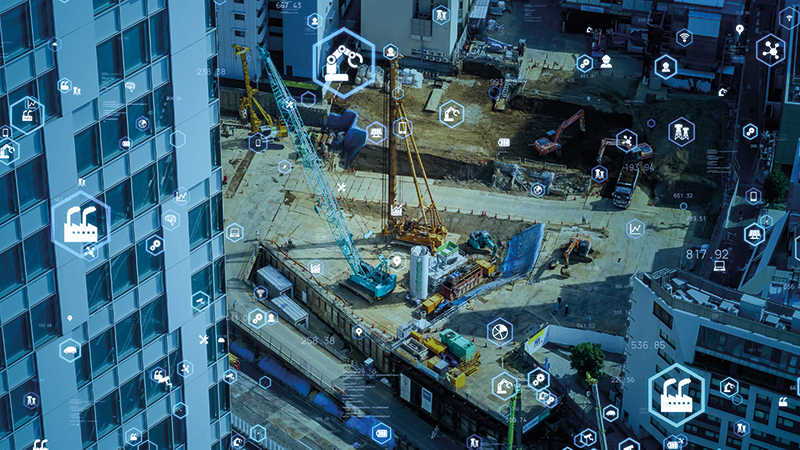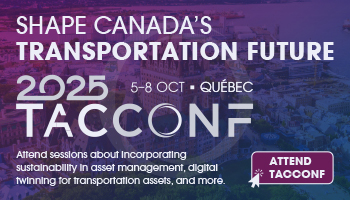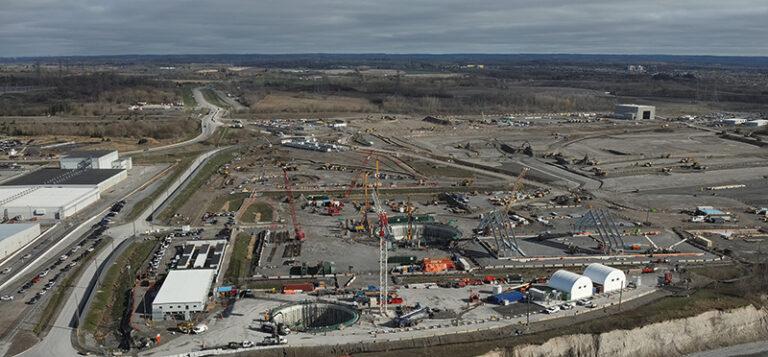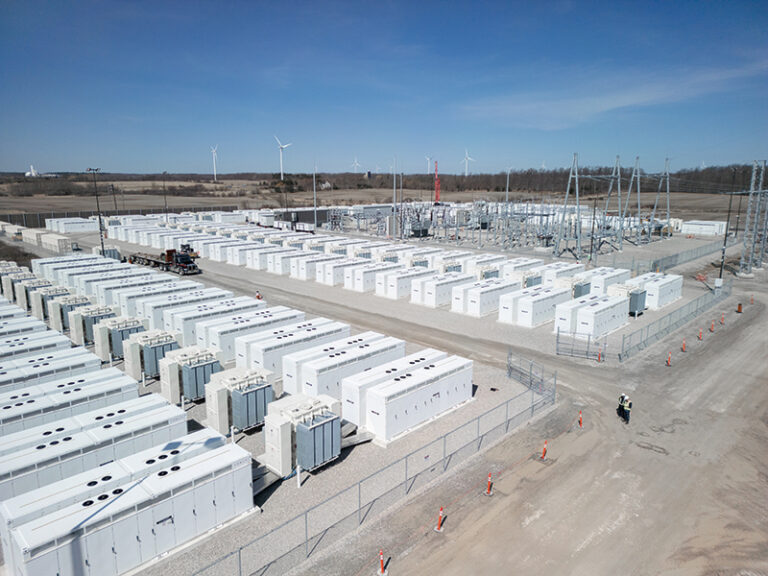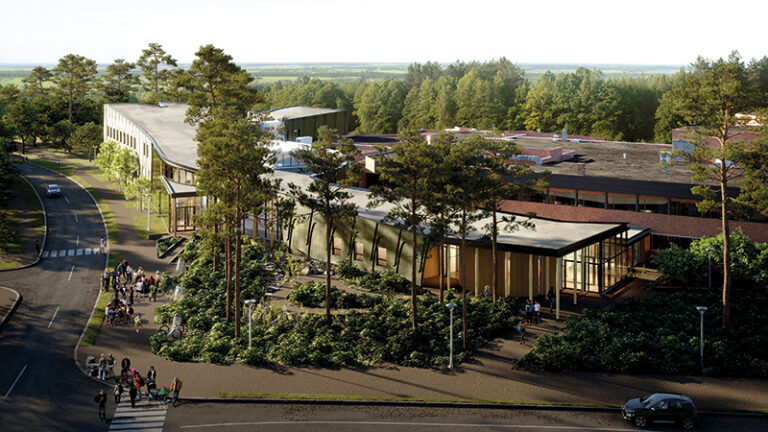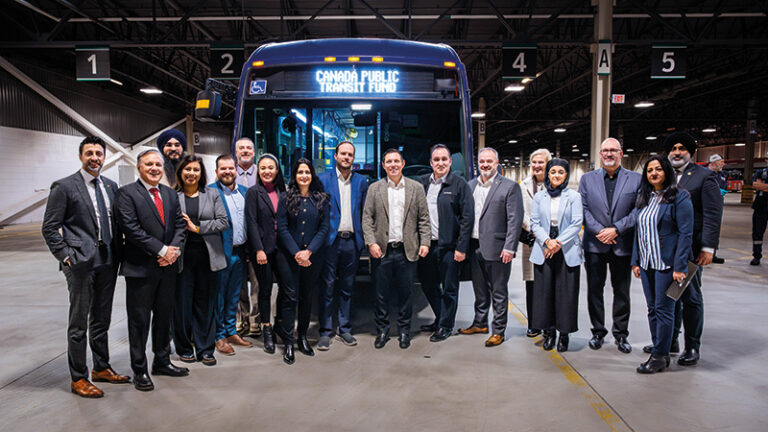While Building Information Modeling (BIM) continues to expand its reach, innovative technologies such as digital twinning and artificial intelligence (AI) applications hold out hope for untold gains for Canada’s construction industry.
A digital twin allows designers and constructors to collaborate and test their ideas through virtual simulations. It can also improve cost and schedule performance, making pre-planning in a digital environment a vital step in the construction process.
According to new research from The Conference Board of Canada, if deployed correctly, generative AI, could help reverse a decades-long decline in productivity and add almost two per cent to Canada’s GDP.
During a recent ReNew Canada Webinar Series—with support from PCL Construction—a panel of experts discussed how these technologies are improving the process not just before and during construction, but throughout the project lifecycle.
ReNew Canada: Have we reached a tipping point with the use of smart technology in the construction industry?

John Boktor (PCL): Yes, we’re starting to reach a bit of a tipping point due to a lot of the headwinds that we’ve seen in the last couple of years, especially after COVID. Then there are the issues around our economy, but also around the labour shortage, particularly within the construction industry. Between digital twins, BIM, and artificial intelligence (AI), we’re starting to learn a lot more, because we need these technologies to be more efficient and more productive. I think the other thing to consider is the generational effect in our industry. Internally, at PCL, around two-thirds of our pre-construction groups are under the age of 35. That demographic is heavily influencing our teams and our projects, they’re pushing new technology, because they understand it better and they want to see that in our industry more.

Domenico Staterri (AtkinsRéalis): The construction industry has been traditional for a long time. Over the past few years, we’ve seen some advancements with technologies, and I think the way we build is changing and it’s going to continue changing, using these technologies. If we combine BIM with AI and digital twins, the possibilities are endless. It is safe to say that we’re approaching a historical period of change in construction, versus how things have been done in the past. We’re not there yet, but I notice a lot more awareness of new technology due to the new resources that are coming out and what the next generation is being taught.

Brandon Milner (EllisDon): I think it’s a combination of the age demographic that we’re seeing in the construction space, but a tipping point sounds like an imminent change in the industry. I think this industry is very slow to move away from the traditional ways that we build things. But there is a bigger propensity for the younger generation, who grew up with iPads, to absorb and utilize technology. I’m aging myself when I say I didn’t, but I would say it’s less of a tipping point and more of an awareness of technology that’s in the space.

Dr. Melanie Robinson (BIM Academy): In the UK, we’ve got an industry split between those that embrace these technologies and those that don’t. Generally, it’s the supply chain that struggles with digital technologies. With any of this, it’s got to be push and pull, and what I mean by that is we’ve got to have clients understanding the value of digital technologies, because ultimately, we work in an industry that has quite small profit margins. There needs to be a pull from clients to enable us to innovate and allow us to make use of these technologies and processes. I think it’s the next big step, but I don’t think it’s going to happen overnight.
Is there a reason healthcare is leading in the use of digital twins and, are there other sectors that could benefit from their use?
Domenico Staterri: It’s popular because [healthcare] is an industry where the benefits are shared amongst all shareholders. I think this is the same for all sectors, and I don’t see any sectors where the use of digital twins doesn’t have advantages. Airports is one sector where digital twins can have huge benefits, from managing baggage handling systems to make sure we reduce luggage loss, or monitoring terminal traffic to plan and avoid delays and congestion. Bridge inspections are another sector. The use of drones and sensors can eliminate the building of the scaffolds and it reduces costs and time and avoids road closures. We can also inspect areas that are difficult to reach for inspectors, which means keeping them safe.
Brandon Milner: The healthcare space is obviously low hanging fruit for digital twins. Having said that, I think there it can literally be used for anything. I think the digital twin that many people envision, is the one portrayed in the film Minority Report, where you move things around with your hands. It’s a little bit less sexy than that in the real world. It’s really a collation of all the IoT data points, which brings a building to life, so we can manage it more efficiently. I think it could be readily applied to any industry if we move our mindset to where it becomes, “Tell me what’s going on in that construction project or that building.”
Dr. Melanie Robinson: If it’s a difference between life or death, then data suddenly becomes an asset, and how you access that and pull it all together from different systems in play is important. Fraser Health are a particularly driven client in that sense. [BIM Academy is a consultant for Fraser Health’s $2.9B new Surrey Hospital and Cancer Centre.]
That’s their utopia, that’s their dream. They’ve got an opportunity to build a brand-new hospital and they want to start afresh in terms of that data and building a hospital that applies to their needs and what they need it to do, technologically. We talk about running scenarios, we talk about diagnoses on different systems, but the most intelligent level for me is that element of control.
John Boktor: Having control and having a true digital twin with live data and control over that data can alleviate issues around the shortage of people to operate hospitals, because they have complex campuses. [PCL] is building it with Project Horizon, the new hospital for SickKids in Toronto and the complexity of the campus—it’s not just one building you’re talking about, but a whole bunch of buildings with different types of amenities aside from the healthcare side of it. I think that aspect is what’s driving them to do better. They’re already advanced around the digital space, so it’s just a next step.
AI has been both lauded and criticized. What are some of its applications in the construction industry?
Brandon Milner: Everything and anything is the honest answer. We have a pilot program that at EllisDon where we are bringing in tech companies that can help us accelerate and facilitate other tasks on the sites that normally are a little bit more manual. Where we’re looking at AI and where we’re utilizing AI is more around building up use cases for problems that we need. The use of AI, I think, can be sprinkled everywhere. My recommendation is that we wouldn’t rely on AI to make decisions, but rather augment the decisions that need to be made, for such thing as costing, pricing, and forecasting.
Dr. Melanie Robinson: AI should be treated as a colleague—it needs to be trained, and it can’t just be unleashed without that training. I think we’ve just got to remember that it is only as intelligent as humans make it. I see it being brilliant for data validation, but you can’t just apply it out of the box. You’ve got to train it on what it’s validating, contextualize what it’s validating, tell it what data it is, and then it does a fantastic job. It’s not going to be a quick solution and it hasn’t been a quick solution for us, it’s been something that we’ve been curating over time and still training it to understand context and nuances and sound more human in certain lights.
John Boktor: There is a sense of carefulness around it, for sure, especially within our company. We don’t want to take away from the understanding of certain aspects of construction. I think that’s where we are. We’re partnering with a few large entities to create an avenue around mundane tasks, especially in our project teams. We’re not saying, “You can’t go out there and use ChatGPT.” The idea is that the control of information on our end must be careful. As an industry, we collect a lot of data. It’s messy and a lot of it’s not good quality. I think there is an opportunity to use AI for the betterment of that data over time and understanding how to better collect the data.
[This article originally appeared in the March/April 2024 edition of ReNew Canada]
Featured image: According to new research from The Conference Board of Canada, if deployed correctly, generative AI, could help reverse a decades-long decline in productivity and add almost two per cent to Canada’s GDP.

